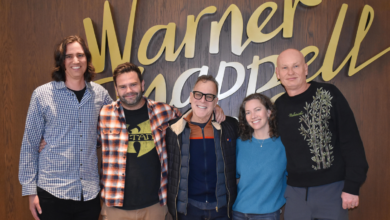Play Kacey Musgraves’ Dreamy Ballad “Too Good to Be True”


One of the standout tracks on Kacey Musgraves’ Deeper Well, the latest release by the seven-time Grammy winner, is “Too Good to Be True,” an intimate ballad about opening up to a new relationship. Like most of the album, this song is built on layers of acoustic guitar, with fingerstyle parts that are so closely entwined it’s often hard to pick out the individual instruments.
Musgraves wrote “Too Good to Be True” with Daniel Tashian and Ian Fitchuk, her primary songwriting and producing team on the whole Deeper Well album as well as previously on star-crossed (2021) and Golden Hour (2018). In addition, “Too Good to Be True” credits Anna Nalick as a writer, for interpolations from her great song “Breathe (2 AM).” The connection between the two songs lies in the melody and chord progression of the verse, but it’s more a similarity than an exact quote. “Too Good to Be True” is in a different meter (4/4 versus 6/8 for “Breathe”) and makes a few chord substitutions, such as Bm7 for D in the verse.
Both Tashian and Fitchuk play acoustic guitar on the album track, along with a third acoustic part by Todd Lombardo, creating a rich blend that perfectly suits Musgraves’ serene vocal. The song sounds in the key of Ab major. The primary part, shown here, is on a guitar tuned down a half step, using A shapes. In recent live performances by Musgraves with her band, a second guitarist uses E shapes at capo 4, while she plays G shapes at capo 1. In distilling the song down to one guitar part, I’ve included some details that may have been played originally on a higher-capo guitar.
For the intro, play the eight-bar pattern shown, with your thumb picking the alternating bass and your fingers adding treble notes on the offbeats. When going from G to Bm7, keep your third finger fretting the D note on string 2. Continue this progression through the verse. This basic picking pattern remains the same through most of the song, with just a few short embellishments.
The notation includes the melodic riff that leads into the second chorus−played on keyboard as well as guitar. In the chorus, on the first two times through the Em–G–Aadd9 progression, use a sus4 embellishment on the Aadd9 to lead back to Em. I’ve transcribed one embellishment used on the track—feel free to make up your own variations. What I’ve labeled the interlude is essentially an instrumental repeat of the last two lines of the chorus. From there, close out the song with a partial verse and a dreamy Aadd9.
Due to copyright restrictions, we are unable to post notation or tablature for this musical work. If you have a digital or physical copy of the September/October 2024 issue of Acoustic Guitar magazine, you will find the music on page 58.

Jeffrey Pepper Rodgers
Jeffrey Pepper Rodgers, founding editor of Acoustic Guitar, is a grand prize winner of the John Lennon Songwriting Contest and author of The Complete Singer-Songwriter, Beyond Strumming, and other books and videos for musicians. In addition to his ongoing work with AG, he offers live workshops for guitarists and songwriters, plus video lessons, song charts, and tab, on Patreon.




